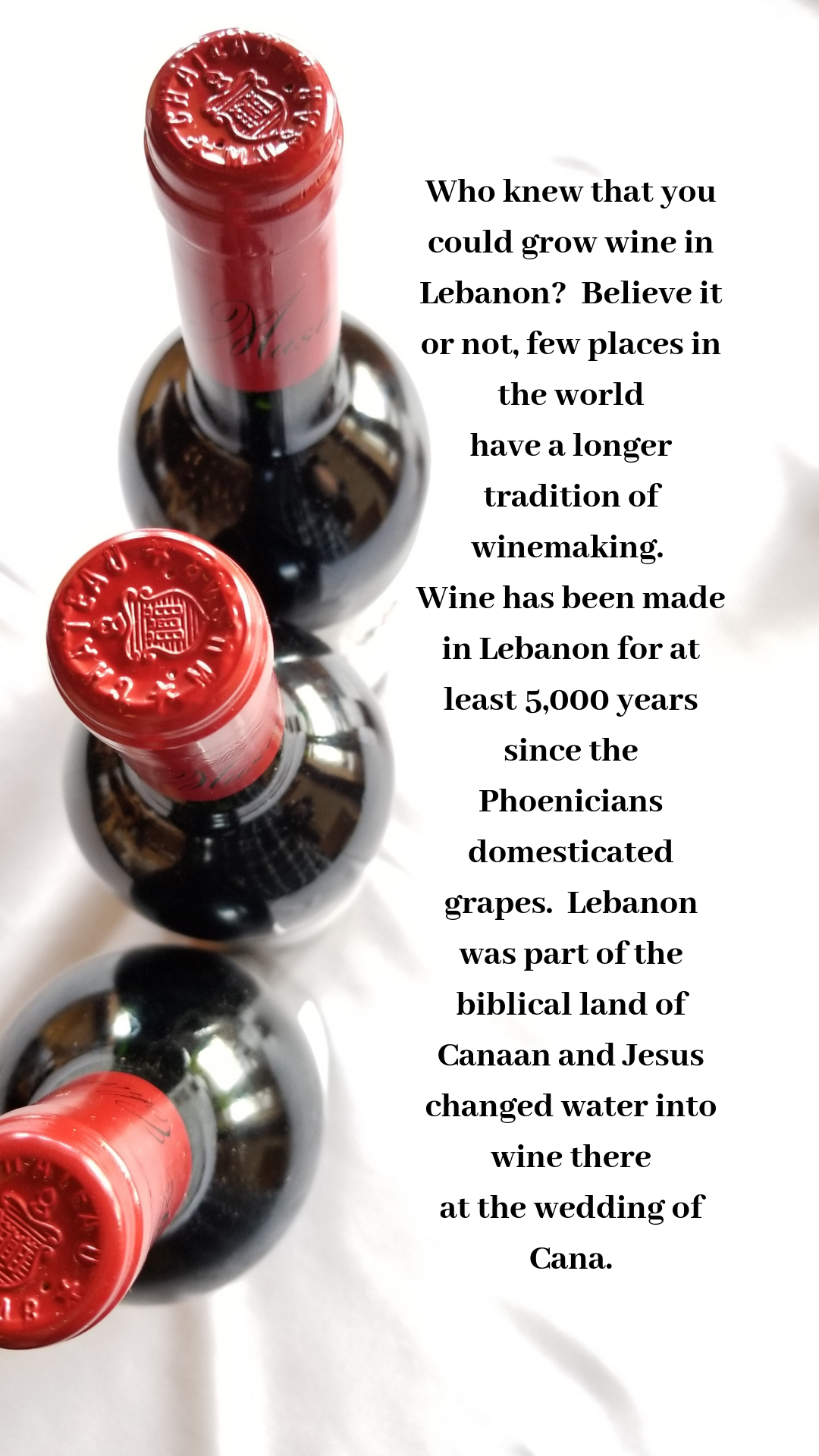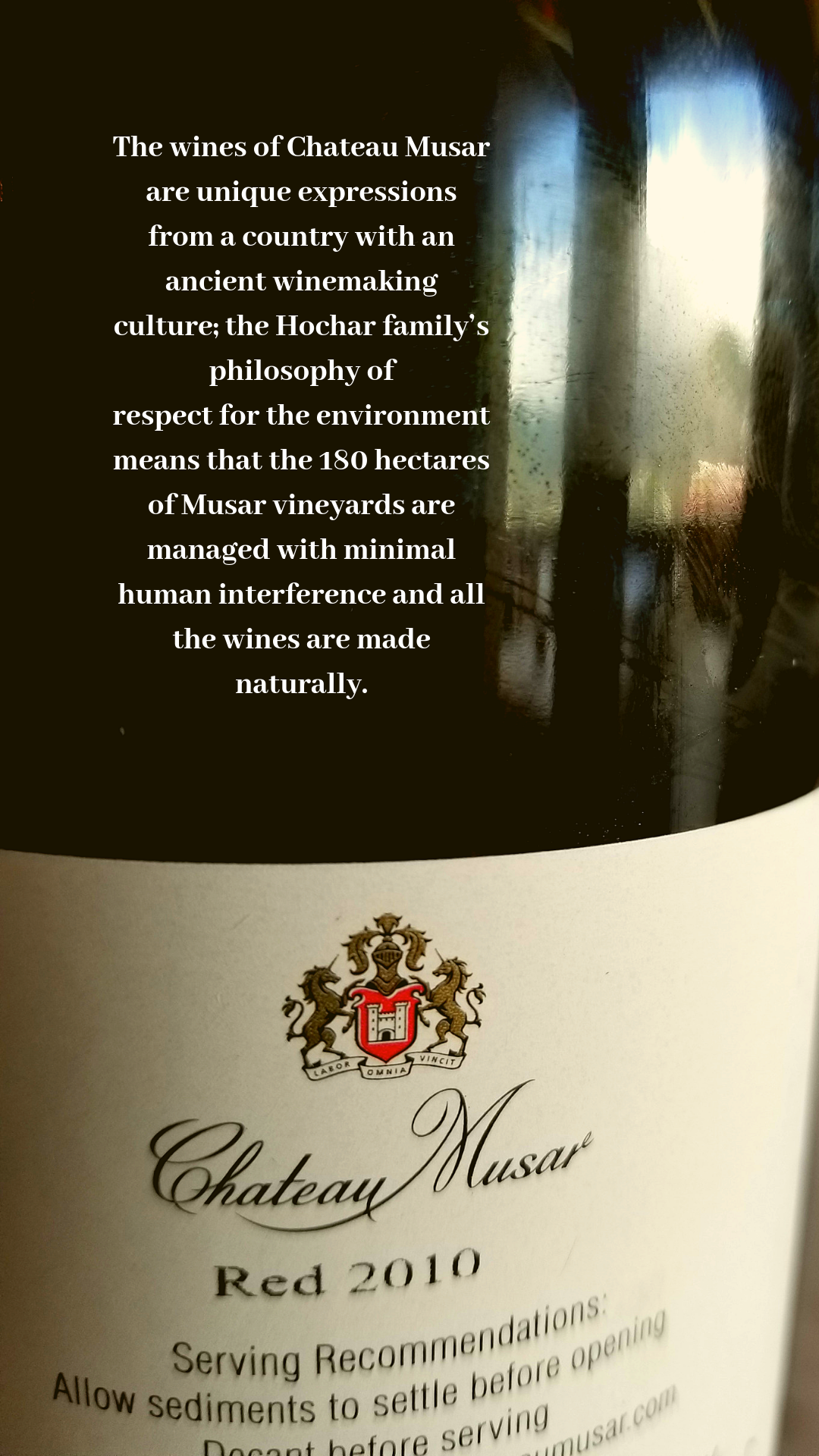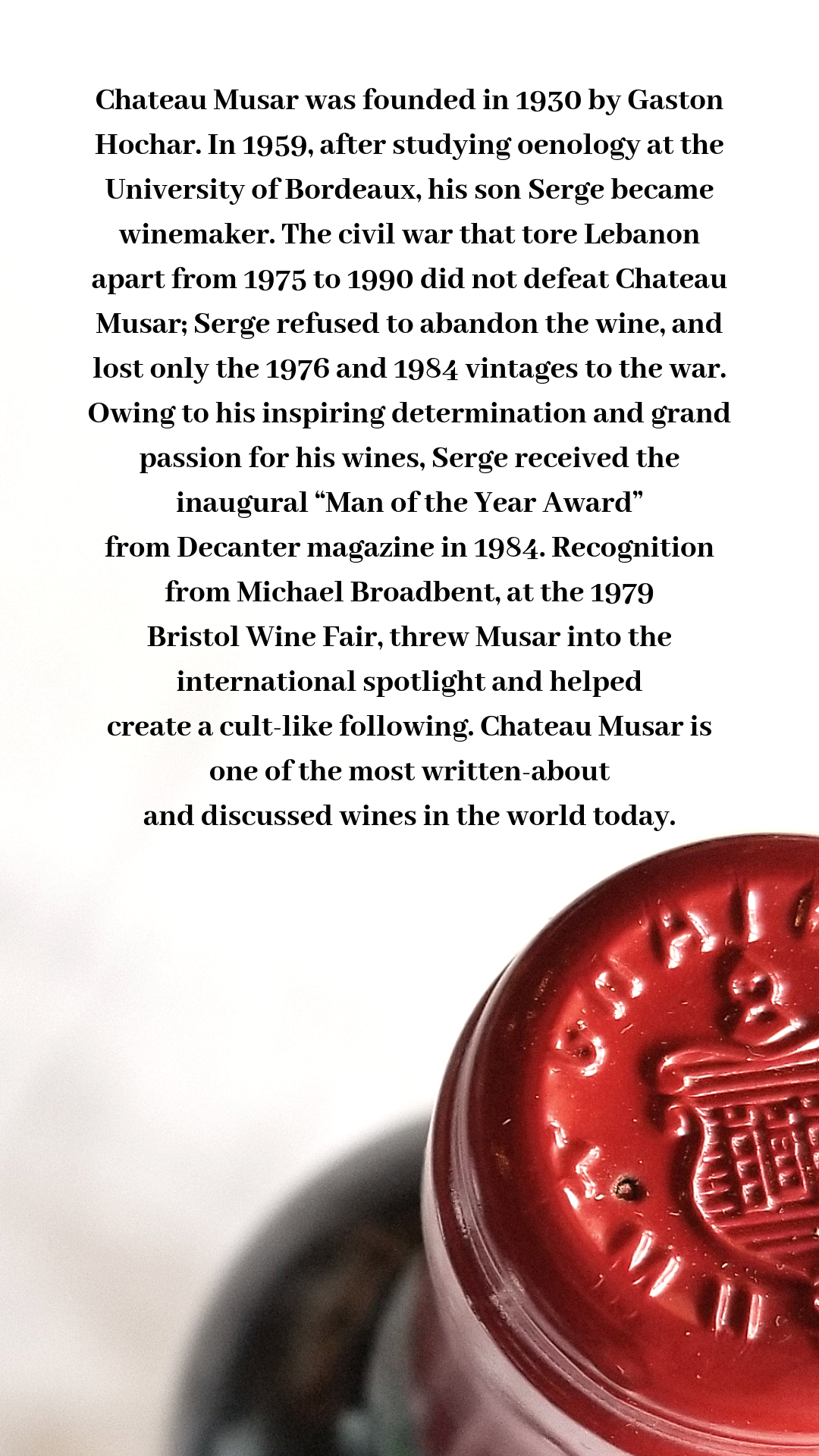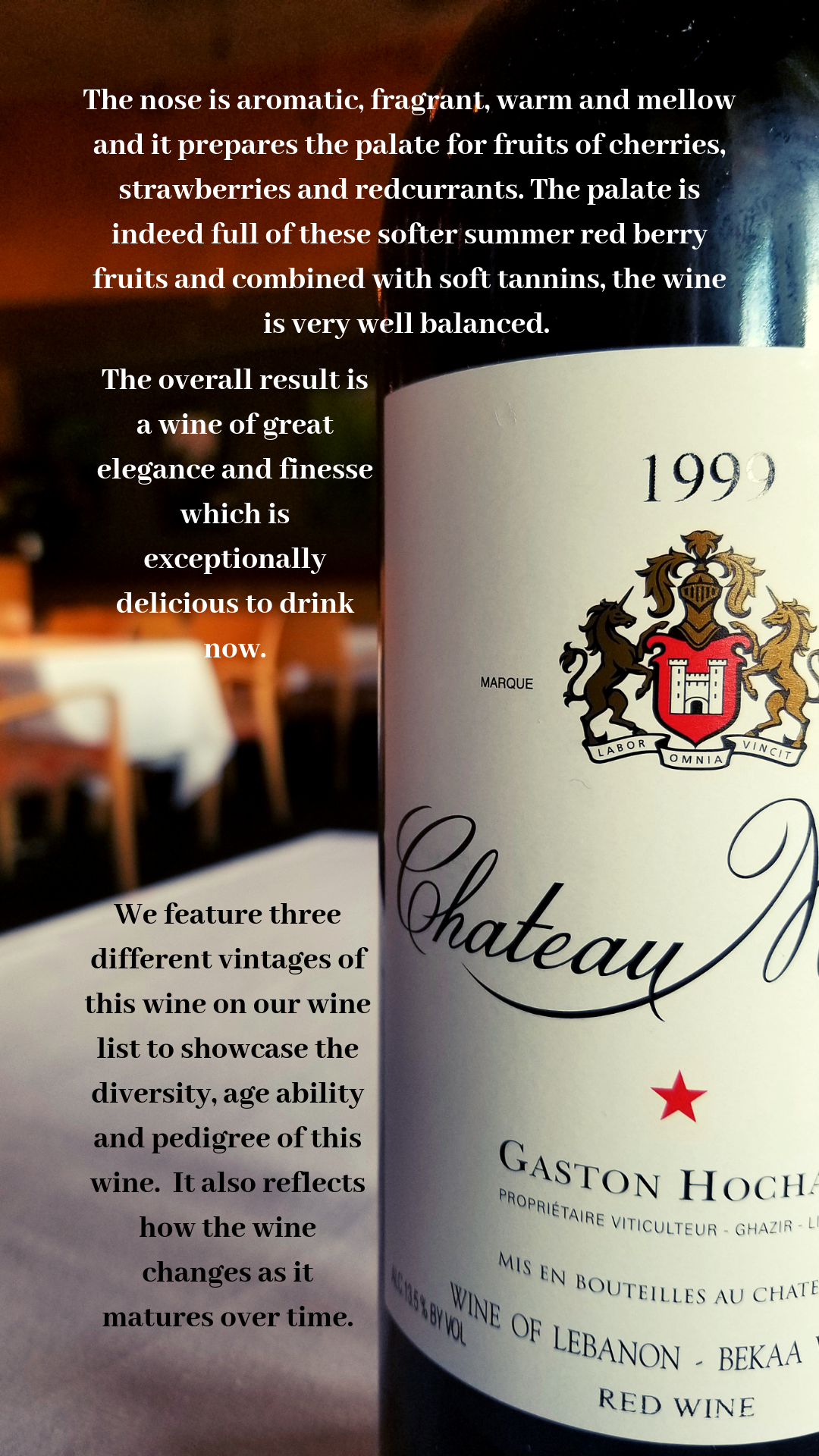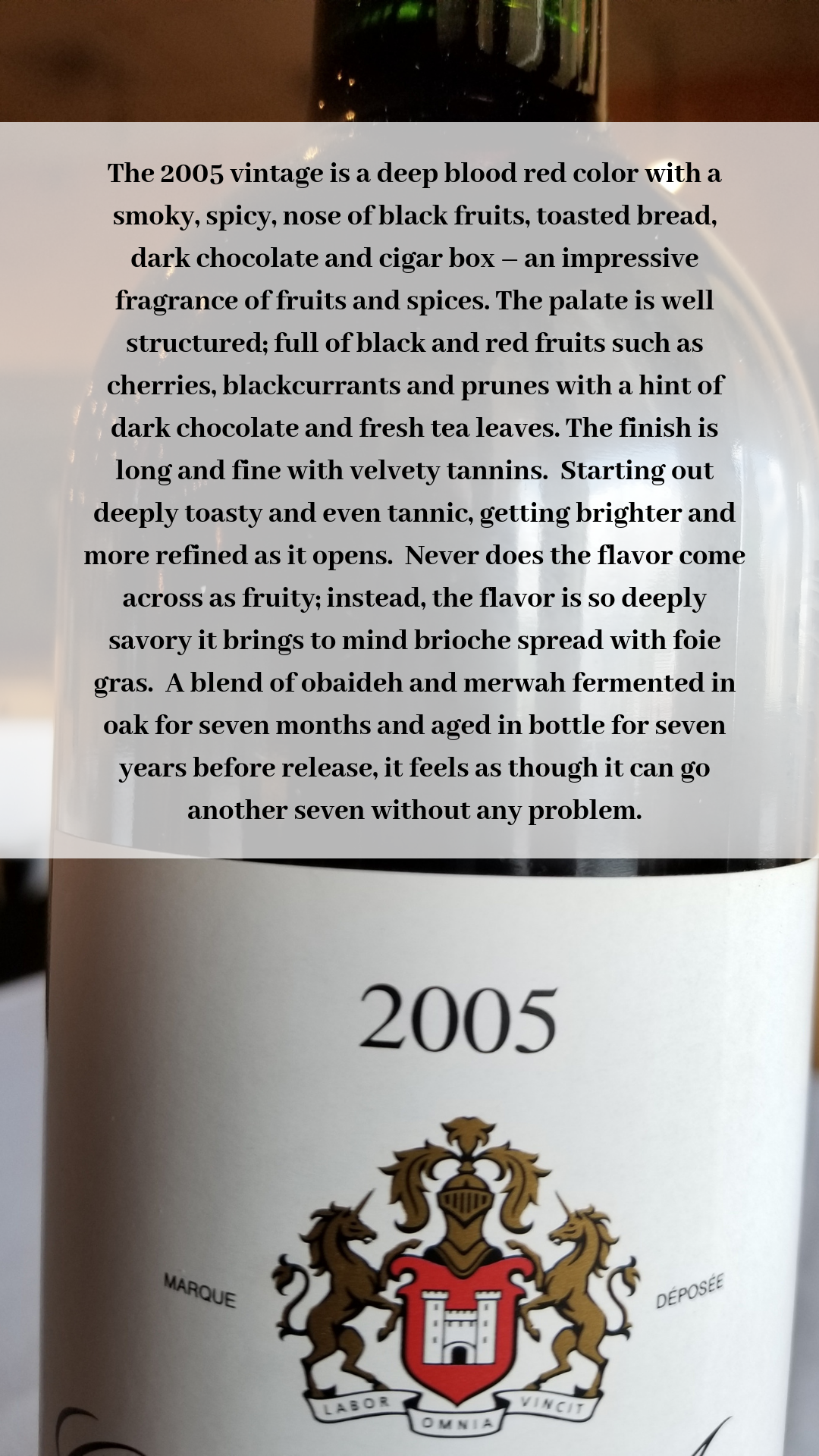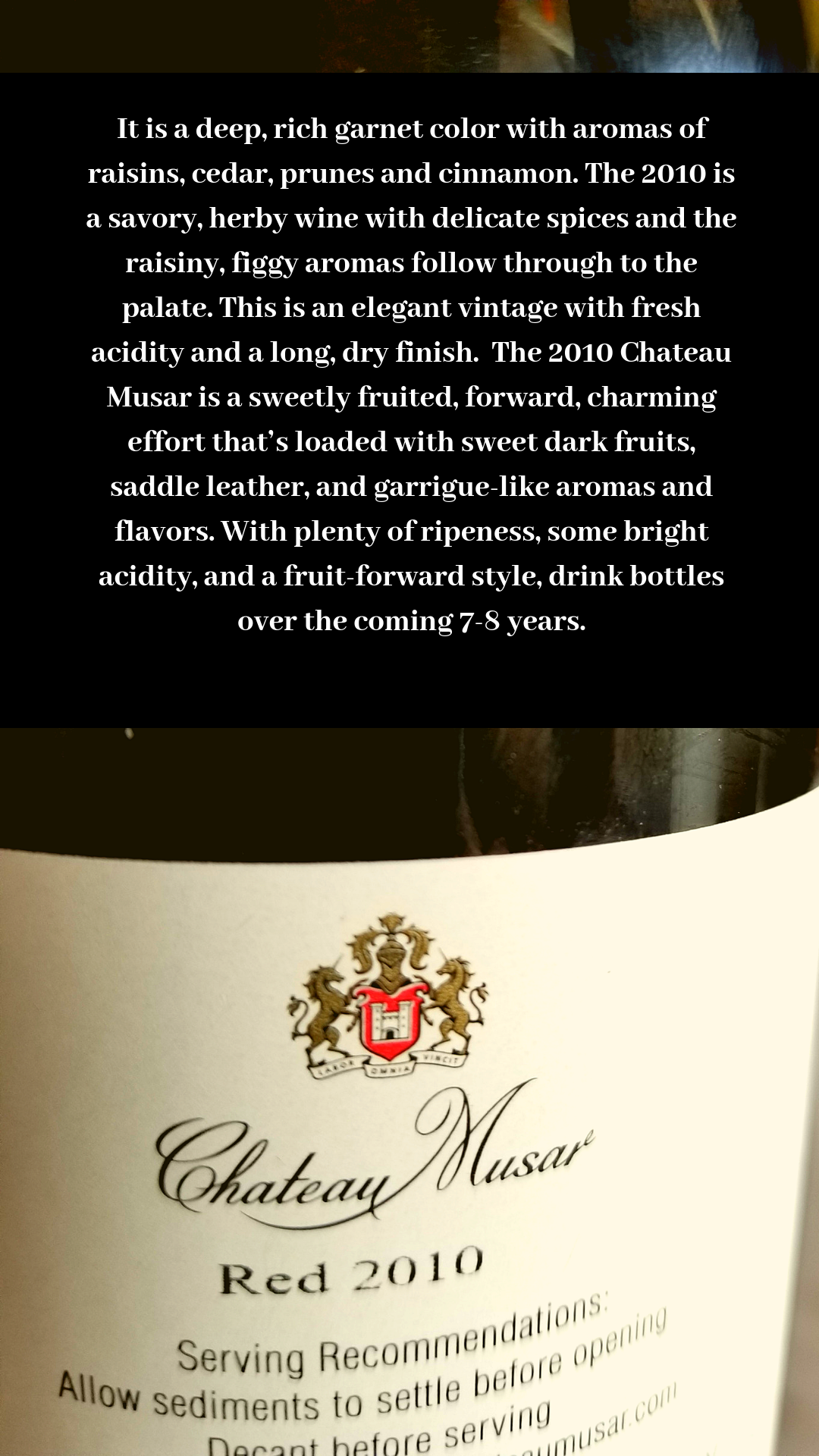#SommFavorites - Chateau Musar
Who knew that you could grow wine in Lebanon? Believe it or not, few places in the world have a longer tradition of winemaking. Wine has been made in Lebanon for at least 5,000 years since the Phoenicians domesticated grapes. Lebanon was part of the biblical land of Canaan and Jesus changed water into wine there at the wedding of Cana.
The latitudes of Lebanon on the eastern Mediterranean coast may seem too low for high-quality wine production, but the Bekaa Valley is on an inland plateau as high as England’s tallest mountains – this moderates the temperatures considerably and helps to produce some very exciting red wines. Chateau Musar is the label best known outside Lebanon for its Bordeaux-like structure.
The wines of Chateau Musar are unique expressions from a country with an ancient winemaking culture; the Hochar family’s philosophy of respect for the environment means that the 180 hectares of Musar vineyards are managed with minimal human interference and all the wines are made naturally.
Chateau Musar was founded in 1930 by Gaston Hochar. In 1959, after studying oenology at the University of Bordeaux, his son Serge became winemaker. The civil war that tore Lebanon apart from 1975 to 1990 did not defeat Chateau Musar; Serge refused to abandon the wine, and lost only the 1976 and 1984 vintages to the war. Owing to his inspiring determination and grand passion for his wines, Serge received the inaugural “Man of the Year Award” from Decanter magazine in 1984. Recognition from Michael Broadbent, at the 1979 Bristol Wine Fair, threw Musar into the international spotlight and helped create a cult-like following. Chateau Musar is one of the most written-about and discussed wines in the world today.
We feature three different vintages of this wine on our wine list to showcase the diversity, age ability and pedigree of this wine. It also reflects how the wine changes as it matures over time.
1999: The nose is aromatic, fragrant, warm and mellow and it prepares the palate for fruits of cherries, strawberries and redcurrants. The palate is indeed full of these softer summer red berry fruits and combined with soft tannins, the wine is very well balanced. The overall result is a wine of great elegance and finesse which is exceptionally delicious to drink now.
2005: The 2005 vintage is a deep blood red color with a smoky, spicy, nose of black fruits, toasted bread, dark chocolate and cigar box – an impressive fragrance of fruits and spices. The palate is well structured; full of black and red fruits such as cherries, blackcurrants and prunes with a hint of dark chocolate and fresh tea leaves. The finish is long and fine with velvety tannins. Starting out deeply toasty and even tannic, getting brighter and more refined as it opens. Never does the flavor come across as fruity; instead, the flavor is so deeply savory it brings to mind brioche spread with foie gras. A blend of obaideh and merwah fermented in oak for seven months and aged in bottle for seven years before release, it feels as though it can go another seven without any problem.
2010: It is a deep, rich garnet color with aromas of raisins, cedar, prunes and cinnamon. The 2010 is a savory, herby wine with delicate spices and the raisiny, figgy aromas follow through to the palate. This is an elegant vintage with fresh acidity and a long, dry finish. The 2010 Chateau Musar is a sweetly fruited, forward, charming effort that’s loaded with sweet dark fruits, saddle leather, and garrigue-like aromas and flavors. With plenty of ripeness, some bright acidity, and a fruit-forward style, drink bottles over the coming 7-8 years.
-- Kerry Ichimasa, Assistant Wine Director (@kerrichimasa)
#KerryFacts

